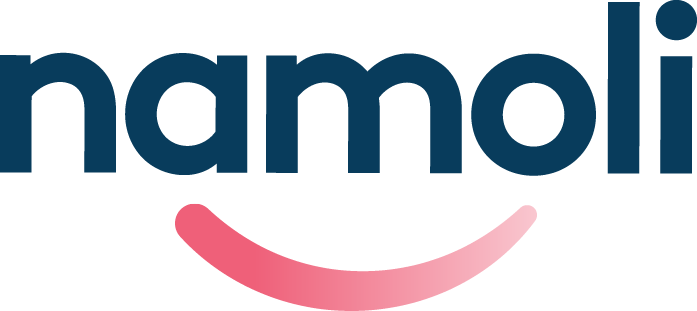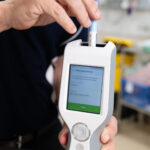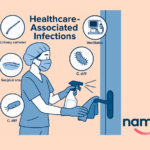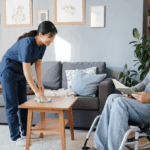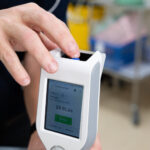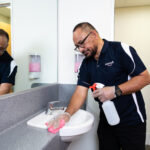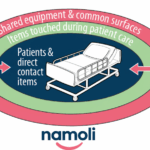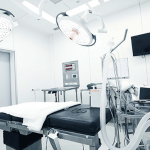Topic Tags:
Infection control begins with understanding where germs live and spread. Healthcare environments are divided into contaminated zones—areas directly around the patient—and clean zones, such as offices and admin areas. This article explains how to manage both zones effectively to reduce cross‑contamination and maintain a safe environment.
Key Takeaways
- Contaminated zones include the patient, surrounding surfaces and equipment; these areas become contaminated via touch, droplets and aerosols and must be disinfected between patients.
- Clean zones (desks, computers, records) should remain uncontaminated, with strict hand hygiene and separate tools to prevent pathogens from spreading from patient areas.
- Effective zone management requires colour‑coded cleaning tools, risk‑based protocols and well‑trained staff to minimise cross‑contamination.
What Is the Contaminated Zone?
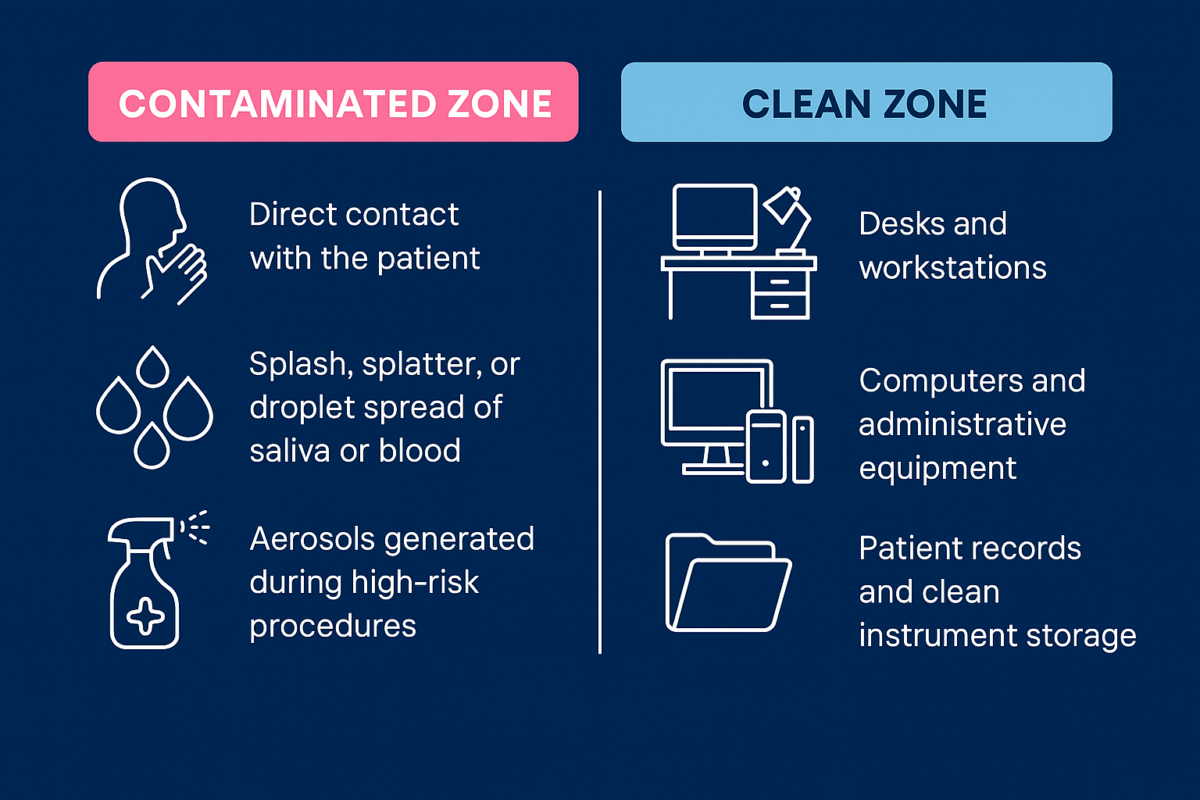
The Contaminated Zones include the immediate area surrounding the patient, such as the dental or treatment chair, surrounding surfaces, and any equipment used during the procedure. This zone becomes contaminated through:
- Direct contact with the patient
- Splash, splatter, or droplet spread of saliva or blood
- Aerosols generated during high-risk procedures
Surfaces in this area are considered potentially infectious and must be thoroughly cleaned and disinfected between patients.
The Clean Zone Explained
The Clean Zone lies outside the contaminated area and includes spaces like:
- Desks and workstations
- Computers and administrative equipment
- Patient records and clean instrument storage
Although this zone should remain uncontaminated, it still poses a risk if protocols aren’t followed. Staff must never move between the Contaminated and Clean Zones without performing proper hand hygiene.
At Namoli, we help healthcare providers define and manage these zones clearly in their cleaning schedules, ensuring physical separation, PPE use, and hygiene standards are consistently maintained.
Namoli’s Approach to Cleaning Protocols and Equipment Use
Thorough and targeted cleaning is the cornerstone of effective infection control. Our process supports best-practice environmental cleaning with tailored strategies for contaminated zones, including:
Best Practices We Implement:
- Preparation of cleaning solutions on-site before each use
- PPE compliance for all cleaning staff in contaminated environments
- Use of microfibre cloths and colour-coded tools to avoid cross-contamination
- Avoidance of sprays to prevent aerosol generation
- Strict changeover of all cleaning items between zones and between patients
Touch Risk Assessment:
Namoli categorises surfaces based on touch frequency and infection risk:
- Low-risk surfaces: Clean with detergent and water
- High-risk surfaces: Clean with detergent and water, then disinfect using TGA-approved products
We work with facility managers to establish routine cleaning schedules that define:
- Responsibilities
- Frequencies
- Product types
- Auditing procedures for quality assurance
Why Contaminated Zone Management Matters
Mismanagement of contaminated areas poses a serious risk of cross-contamination and healthcare-associated infections (HAIs). Organisms can be unknowingly transferred:
- From the Clean Zone to the patient
- From the patient to the staff and communal spaces
- Via indirect contact (touching contaminated equipment, then other surfaces or people)
Namoli breaks this chain of transmission through:
- Clear zoning strategies
- Strict hand hygiene support
- Terminal cleaning protocols
- Comprehensive compliance audits
By defining contaminated areas and implementing precise cleaning and disinfection practices, we help facilities protect their patients, staff, and reputations.
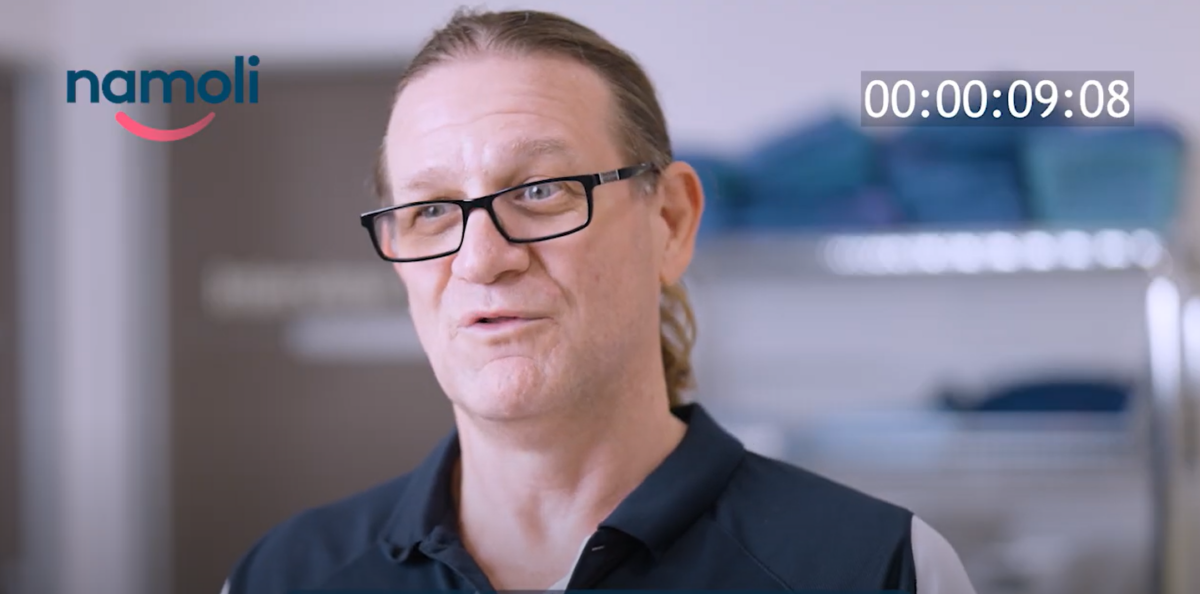
Need Help with Contaminated Zone Management?
Namoli Healthcare delivers zone-specific infection control support for oral health clinics, hospitals, and specialist practices.
Book a free consultation to strengthen your infection prevention protocols with our expert healthcare cleaning team.
Related Posts
Topic Tags: Effective infection control is central to resident safety in aged care, where close living environments, chronic illness, and…
Topic Tags: In healthcare environments, many pathogens spread through high-touch surfaces that look clean but still carry organic residue. Traditional…
Topic Tags: Maintaining a safe, clean environment in aged care facilities is essential for protecting residents, supporting staff, and meeting…
